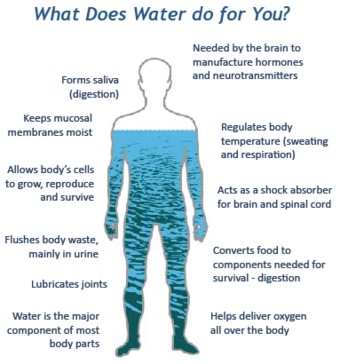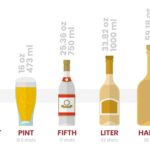Water is essential for survival. While we often think of food and air first, water plays a crucial role in keeping us alive. In fact, water makes up a significant portion of our bodies. But just how much water is in the human body?
Up to 60% of an adult human body is water. The amount varies based on factors like age, gender, and body composition. Different organs also have varying water content.
Water Content in Different Body Parts
According to a 1945 study by Mitchell and others, the brain and heart are composed of 73% water, while the lungs are approximately 83% water. The skin contains 64% water, muscles and kidneys are 79%, and even bones are 31% water. This highlights the critical role water plays in various bodily functions.
 Graphic showing the percentage of water in different human body parts, emphasizing the importance of water for vital functions.
Graphic showing the percentage of water in different human body parts, emphasizing the importance of water for vital functions.
Daily Water Intake Recommendations
Humans need to consume a certain amount of water daily to survive. The exact amount depends on individual factors, including age, gender, and environment. Generally, adult males require about 3 liters (3.2 quarts) per day, while adult females need about 2.2 liters (2.3 quarts) per day. It’s important to note that we obtain water not only from drinking liquids but also from the food we eat.
Essential Functions of Water in the Human Body
Water serves several essential functions that keep us alive and healthy:
- Building Material: Water is a vital nutrient for every cell, serving as a fundamental building material.
- Temperature Regulation: Water regulates our internal body temperature through sweating and respiration.
- Nutrient Transport: Water in the bloodstream metabolizes and transports carbohydrates and proteins, which our bodies use as food.
- Waste Removal: Water assists in flushing waste products from the body, primarily through urination.
- Shock Absorption: Water acts as a shock absorber for the brain, spinal cord, and fetus.
- Saliva Formation: Water is a key component of saliva.
- Joint Lubrication: Water lubricates joints, allowing for smooth movement.
Factors Affecting Body Water Percentage
Dr. Jeffrey Utz from Allegheny University noted that the percentage of water in the body varies among individuals.
- Age: Babies have the highest water percentage, around 78% at birth, which decreases to about 65% by age one.
- Gender: Adult men typically have around 60% water, while women have approximately 55%.
- Body Composition: Fat tissue contains less water than lean tissue. Thus, people with more body fat have a lower percentage of water.
Therefore, babies and children generally have a higher percentage of water than adults. Women tend to have less water than men due to having a higher proportion of body fat. Similarly, individuals with more fatty tissue have a lower water percentage compared to those with less fatty tissue.
The Importance of Water for Life
Without an ample supply of liquid water, life as we know it wouldn’t exist. The unique properties of water make it essential for life. Our cells are filled with water, and its ability to dissolve substances allows our cells to utilize nutrients, minerals, and chemicals in biological processes. Water’s surface tension also plays a role in transporting these materials throughout our bodies. Furthermore, water is crucial for transporting waste materials out of the body.
References and Further Reading
- Mitchell, H.H., Hamilton, T.S., Steggerda, F.R., and Bean, H.W., 1945, The chemical composition of the adult human body and its bearing on the biochemistry of growth: Journal of Biological Chemistry, v. 158, issue 3, p. 625-637.
- The Nature of Water: Environment Canada
- Project WET (PDF)

